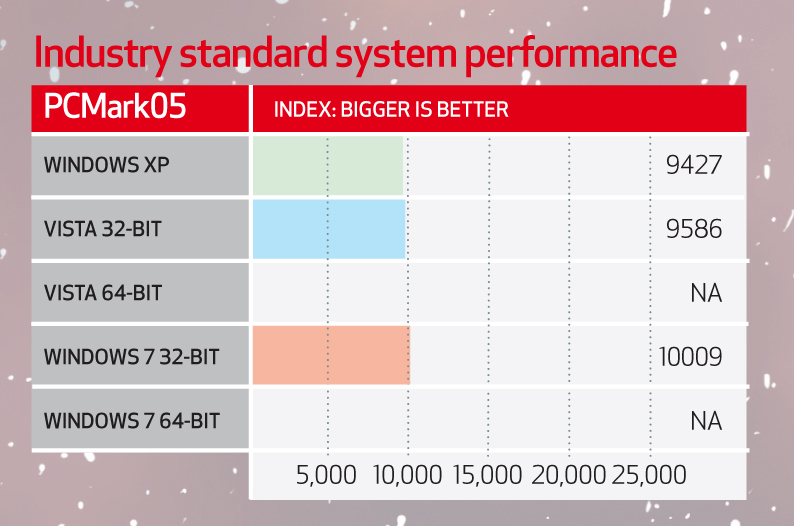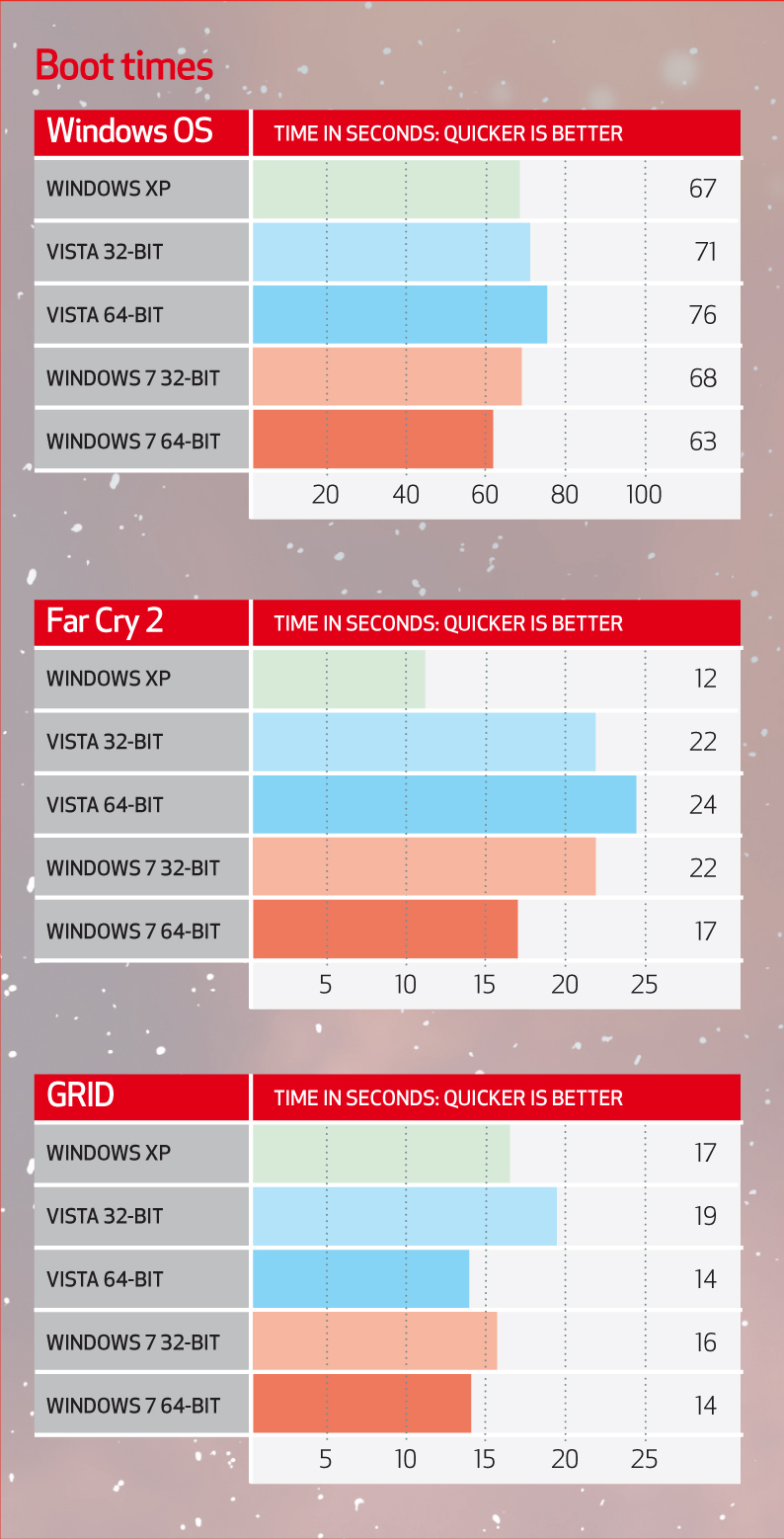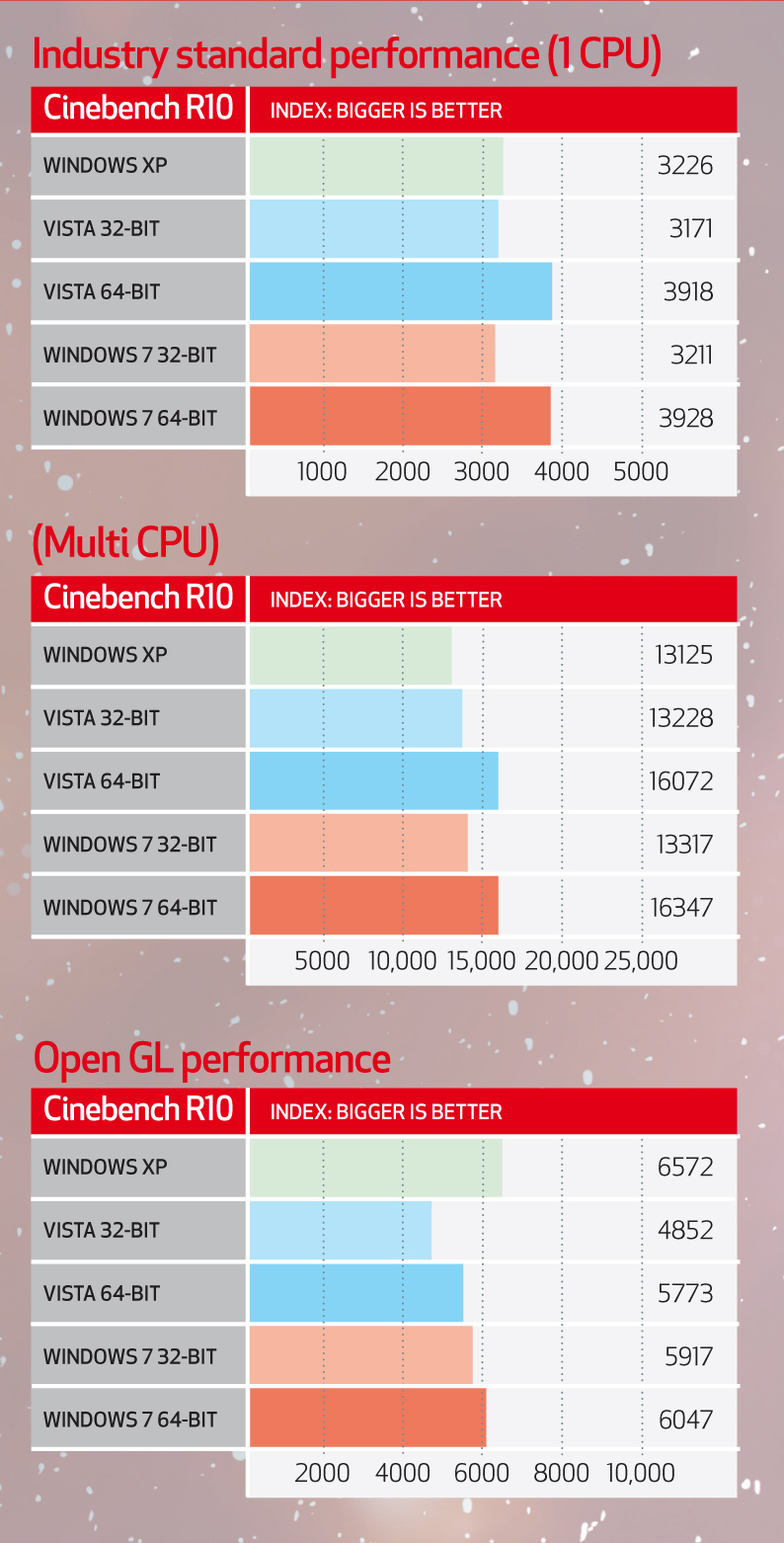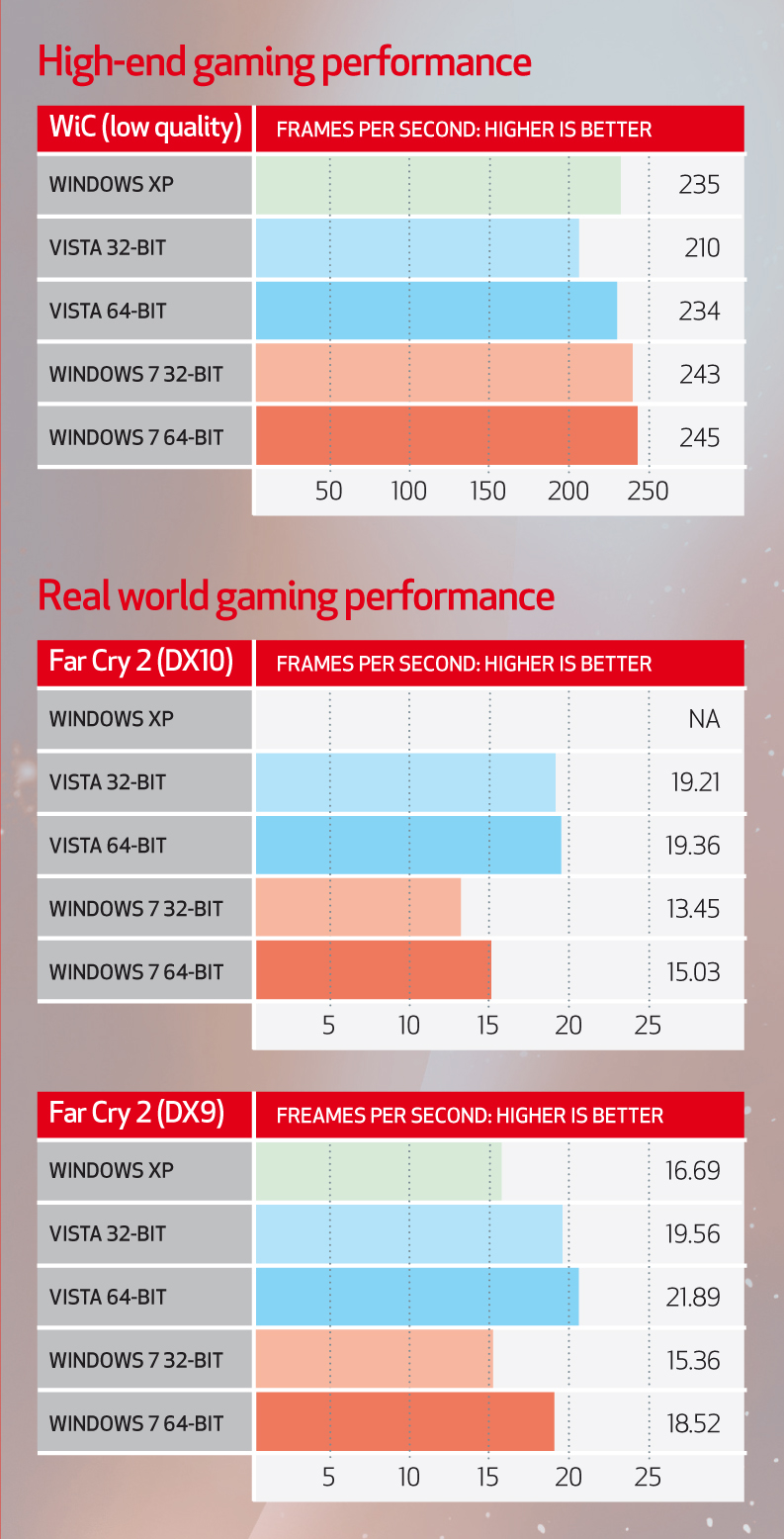Windows 7 gaming performance compared
Benchmarks don't lie! Is Windows 7, XP or Vista better for gaming?
To accompany these results, we've also benchmarked the operating systems using that perennial favourite, 3DMark06. Futuremark may have released 3DMark Vantage a while ago now, but we're still not convinced about its usefulness for assessing a system's gaming performance. For overall system performance we've used PCMark05 (although this only works in 32-bit versions of Windows) and Cinebench R10 for more serious work (there are separate 32-bit and 64-bit executables).


Finally, we've recorded boot times for the operating systems and for GRID and Far Cry 2. The results for these timed tests were a little surprising as well.

Meeting expectations
We'll freely admit that we expected Windows 7 to shine like a particularly shiny thing in these gruelling tests. One thing that came to light straight away though, is that it isn't as honed under the hood as it feels. The interface might be smooth and everything might work, but the code isn't optimised, there's debug code swilling around and, from what we can see, Nvidia's drivers still have room for improvement.
There is some good news with Windows 7 though. Firstly, raw processing performance is stronger than in Windows XP and Vista. The Maxon Cinebench test can be used on machines boasting up to 16 cores, so it quite happily handles the eight that show up here (that's HyperThreading across four real cores).

The first two sets of results focus purely on CPU rendering and put Windows 7 in the lead, particularly in the multiple-core test. Vista isn't far behind, but if you want a serious rendering platform there are good things coming. This message was backed up when we configured the graphics settings as low as possible in World in Conflict.

By doing this, we push the graphics card out of the rendering loop as far as we can and focus on straight computation. The 64-bit version of Windows 7 managed 245fps, while 32-bit Vista brought up the rear with 210fps. Microsoft has heavily optimised the code paths in its soon-to-be -released OS, which will benefit gamers as well as more serious number crunchers.
Sign up for breaking news, reviews, opinion, top tech deals, and more.
The key reason Windows 7 isn't topping the benchmarks is due to the state of Nvidia's drivers. This isn't a dig at the GPU giant, merely a statement of fact – after all, the OS hasn't been released yet. Cast your mind back to the release of Vista and the shaky start that had and we'd hazard a guess that Nvidia will be pushing up the framerates as the launch date nears.
We saw a hint of this as we went from the 179.11 drivers that were installed by default, up to the latest available at the time of testing: 181.71. Framerates didn't rocket, but a few extra frames are always welcome.
Vista is at the other end of this development cycle now and, as such, has a solid driver base. Indeed, Vista produced strong results in testing, particularly in Far Cry 2, where it managed the best frame rates of any system. Strangely, Ubisoft's game put in comparable performance in DX10 and DX9, although it's good looking whichever code path you run it on.
Current page: Performance and boot times
Prev Page How we tested Next Page DX10 vs the rest of the world